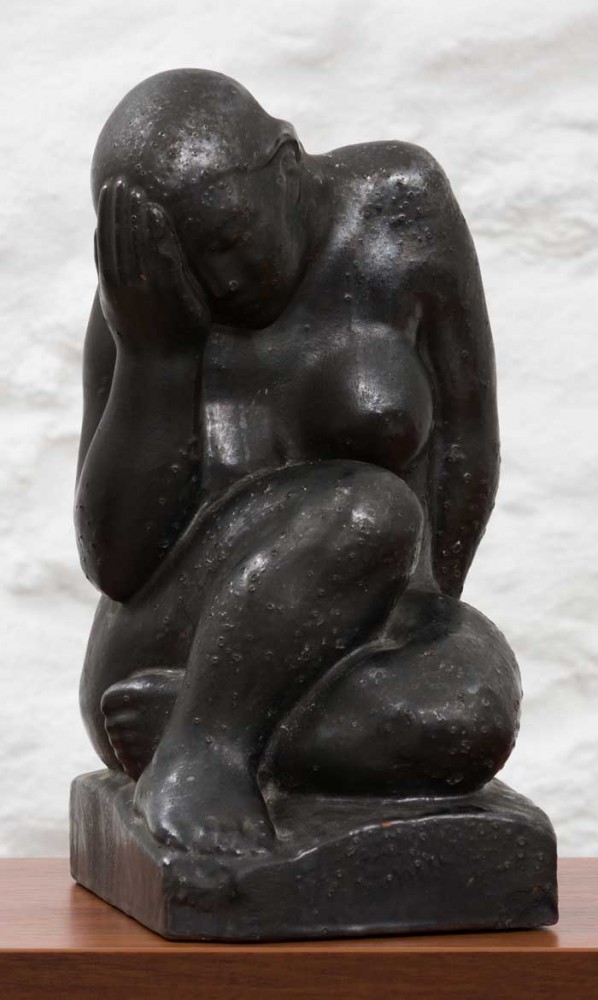After his studies, the artist worked as a teacher of gypsum moulding at Pallas and then as an instructor of a sculpture class at the State School of Arts and Crafts. In 1944–50, he was a lecturer at the Tallinn State Institute of Applied Arts and later was a director of said institute. Sannamees was also a founder and chairman of the ESSR Union of Artists.
Most of his creations are free-standing sculptures – portraits and figures. His favourite material was bronze, although he also made substantial works from wood, marble, granite and clay. The only sculpture at the auction, “Crying woman” is also made from glazed clay.
Sannamees was without a doubt one of the most remarkable portraitists in Estonian sculpture art. His portraits of men are powerful and expressive while portraits of women and children are much more intimate. The sculpture has portrayed representatives of many spheres of life (A. Tassa, F. Tuglas, J. Tõnisson, J. Vilms, K. Päts, E. Wiiralt, M. Metsanurk). In the earlier creations of the artist, some art deco such as stylisation of form can be found (“Female figure with hands held up”, sculptural decorations at the Tartu cinema Athena”); in later works, the expressiveness of movements and tensive form are at the forefront (“Lying woman”, “Narcissos”).
Sannamees has also created free-standing and decorative sculptures, as well as figures and monuments, such as the monument to the pupils and teachers who died in the War of Independence at Tallinn Secondary School of Science (1927) and the statue of A.H. Tammsaare in Albu (1935). Besides sculptures, Sannamees has left us some interesting graphic sheets, many skilful drawings, and some oil paintings.
.png)
